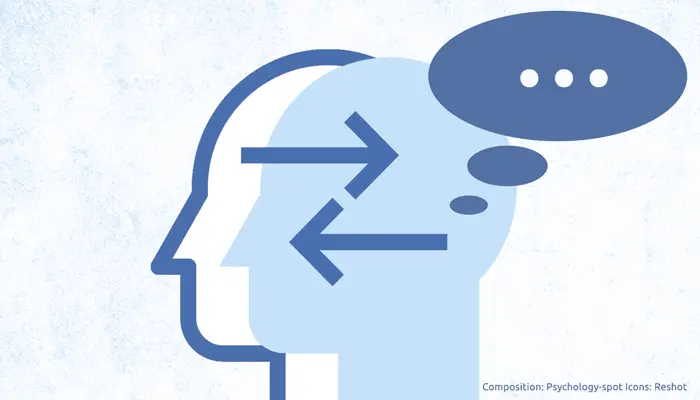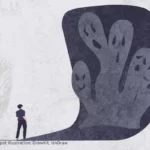
The “Theory of Selves” explains that our personality is composed of a multiplicity of selves that take control as needed to protect us from danger, ensure our survival, and make us less vulnerable.
Basically, we are a mixture of energetic patterns or “selves.” Some of these energies are familiar and comfortable to us, but others may be strange or even downright unpleasant. In these cases, we refer to them as “disowned selves.”
Pause and think about someone you find very unpleasant. What traits do you dislike most? Why do you despise that person? Determine which qualities repel you.
You’ve just discovered your first disowned self. Those traits that irritate you so much reflect an energetic pattern within you that, under no circumstances, you want to integrate into your life.
In fact, we can easily detect disowned selves because of the intense emotional reaction we have when we appreciate those characteristics in others. For example, a deeply spiritual person may feel profound contempt for someone successful who has accumulated wealth throughout their life. A person who has had to work hard for themselves may feel a deep repulsion for “weak” and whiny people.
These examples clearly convey the intense reactions that the disowned self provokes when we discover it in another person. These reactions are nothing more than the result of an energetic pattern we hide, and the energy we use to keep it hidden from our awareness.
How do rejected selves develop?
The rejected self is a behavior, idea, or feeling that has been punished every time it has appeared. These may have been very subtle punishments, such as the withdrawal of parental attention from the child, or it may even have been direct criticism or a full-blown reprimand. However, regardless of the punishment, the result is the same: we understand that there are certain behaviors that must be disowned because they are not socially acceptable, or at least in our immediate context.
So we repress them, but that doesn’t mean we can destroy them. These selves continue to exist in our unconscious, from where they exert their influence. These repudiated selves are like our shadows, and so, when we see them reflected in other people, we relive the shame of the first time. That punishment is reactivated, and the energetic pattern resonates with enormous force.
Obviously, since this behavior is associated with pain, humiliation, and punishment, we want it to disappear as quickly as possible. And to quiet our inner unease, we must get rid of the person who reflects it, so we end up repudiating them.
It’s curious that much of the stress and problems in our interpersonal relationships stem from these disowned selves, which we haven’t accepted. We suffer as the same patterns repeat themselves, and instead of confronting them, we struggle more to bury them.
However, no matter how deep the hole we dig, those disowned selves won’t disappear. Rather, they’re lurking, ready to jump out at any moment.
Vulnerability: The most universal rejected self
One of the selves most of us learn to disown very early in life is the one that represents a vulnerable child. However, this self can be our most valuable subpersonality because it is closest to our essence and allows us to connect with others without masks and to love completely, without reservation.
Unfortunately, this self is often repudiated and disappears from our consciousness by the age of 5, when the controlling self emerges with force, ridding itself of vulnerability because it understands it as an obstacle.
This is because, as children grow, parents reject vulnerability because their mission is to foster strength. Furthermore, parents typically don’t have a conscious relationship with their own vulnerability, so this process of ancestral disavowal is perpetuated.
Embracing the rejected selves
Voice therapy, proposed by American psychologists Hal and Sidra Stone (perfectly explained in the book “Voice Dialogue Manual: Recognizing and Accepting Everything Within Us”), involves getting to know these selves and learning to regulate their energy for our benefit.
The first step is to recognize when a disowned self is operating. To do this, it’s often enough to pay attention to your emotional reactions. When someone’s behavior is truly unpleasant to you, to the point of being almost unbearable, it’s because it’s a reflection of a disowned self.
At this point, you’ll realize that you don’t need to “straighten” or “correct” that person, but rather look within yourself.
The second step is to discover those qualities you overidentify with, those you’re particularly proud of, such as being very demanding or always being kind. These qualities make you feel special, and you probably don’t want to lose them. However, you must consider that they are also limiting you, even though you consider them to be positive.
The qualities you’ve overidentified with can turn you into an intolerant, uncompromising, and inflexible person, unable to relax or accept the existence of other facets to your personality. These qualities lead you to judge others by your own standards and will keep you stuck in your comfort zone, failing to fully realize the potential you carry within you.
The third and final step is the most fun. Once you’ve formed an idea of what this disowned self is like, try putting yourself in its shoes and talking to it. Imagine how it would direct and handle different situations if it were in charge of your life.
Very soon, you’ll feel a different energy flowing through you. You can use it to see the world and your problems from a new perspective. These rejected selves are often an incredible source of new ideas, solutions, and inspiration.
Of course, it’s not about giving it control, you don’t have to become that disowned self, it’s simply about accepting that part of you and, from time to time, listening to what it has to say.
Reference:
Stone, H. & Stone, S. L. (2014) Manual del Diálogo de Voces. Barcelona: Editorial Eleftheria.




Leave a Reply